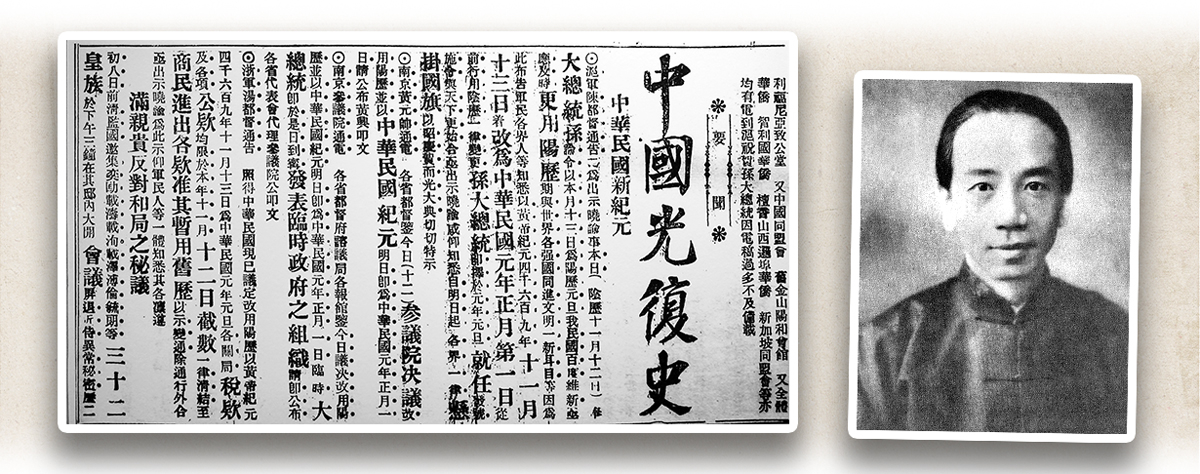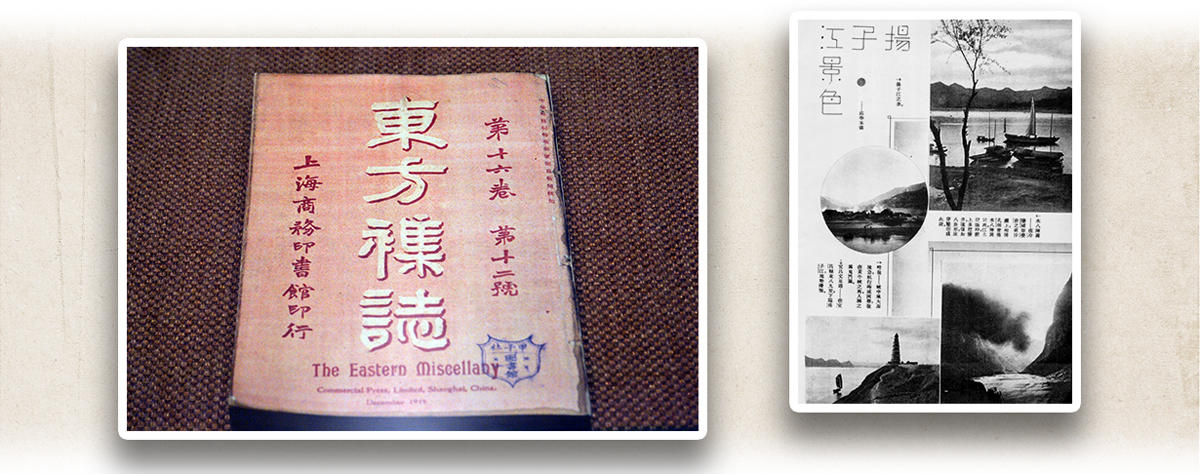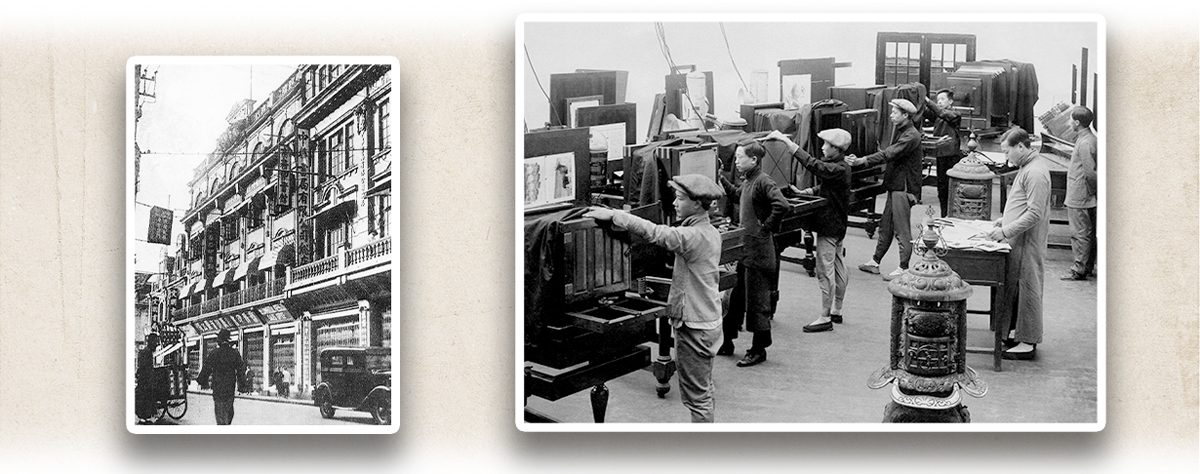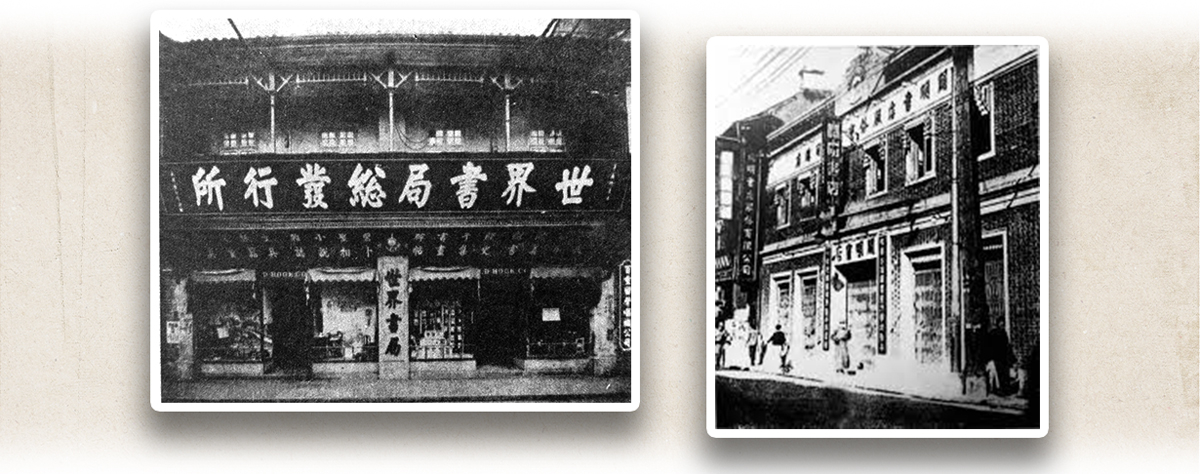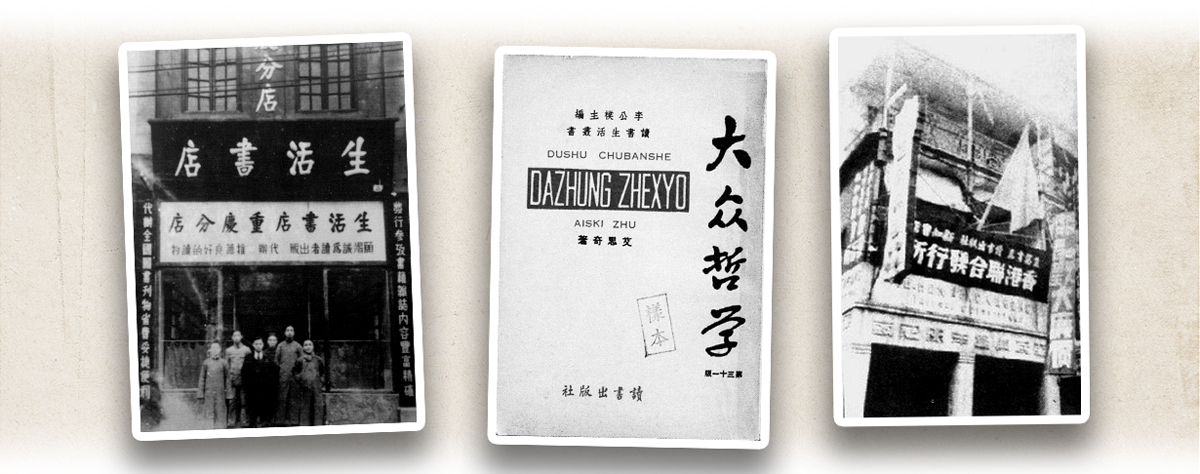China’s press and publication prospered during the Republican period. Although ancient China had “dibao” (邸報, literally “reports from the official residences”) and “jingbao” (京報, literally “official reports from the capital”), newspapers and magazines emerged only in modern times when more Westerners came to China. The Canton Register (《廣州紀錄報》, established in 1827) and the Eastern Western Monthly Magazine (《東西洋考每月統紀傳》, established in 1833) were two of the first presses in China. By 1911, approximately 500 newspapers and periodicals were established in China.
After the founding of the Republic of China (ROC), the number of newspapers grew. In 1947, there were 1,781 newspapers registered in the Nationalist Government-controlled areas, with approximately two million copies published. Well-known period newspapers included: Shen Bao (《申報》, founded in 1872); Sin Wan Pao (《新聞報》, founded in 1893); the official Republic Daily (《民國日報》, founded in Shanghai﹝上海﹞in 1916), Central Daily News (《中央日報》, founded in Shanghai in 1928), Ta Kung Pao (《大公報》founded in Tianjin﹝天津﹞in 1902 and reestablished in 1926) ; Xinmin Bao (《新民報》, founded in Beiping﹝北平﹞in 1929); Wen Wei Po (《文匯報》, founded in Shanghai in 1938); and Xinhua Daily (《新華日報》, founded in 1938). As for periodicals, The Eastern Miscellany (《東方雜誌》) launched in 1904 established a solid reputation; also famous were Guomin (《國民》) first released in 1913, and Jiayin (《甲寅》) first published in 1914. In September 1915, the revolutionary Chen Duxiu (陳獨秀) founded Youth Magazine (《青年雜誌》, later renamed La Jeunesse, or New Youth﹝《新青年》﹞), officially raising the curtain for the New Culture Movement. Together with The Weekly Review (《每周評論》) and The Renaissance (《新潮》), New Youth actively promoted science and democracy.
A multitude of publishers sprang up nationwide as well. In addition to the Commercial Press (商務印書館, founded in 1897), there were also Chung Hwa Book Company (中華書局, founded in 1912), Dah Tong Book Company (大東書局, founded in 1916), World Book Company (世界書局, founded in 1917), Kaiming Book Company (開明書店, founded in 1926), and Joint Publishing (三聯書店, founded in 1948), which was the merger of three publishers and book stores including Life (生活書店, founded in 1932), New Knowledge (新知書店, founded in 1935), and Reading (讀書出版社, founded in 1936) in Hong Kong.
|
|
What were the well-known publishers and their representative works in China prior to 1949? |
|
|
See answer below. |
Street bookstalls and newsstands in Shanghai during the Republican period. Various new publications such as newspapers, magazines, and books created a reading culture and ushered in a golden age for modern Chinese journalism and publishing.
Shen Bao was an influential newspaper in the period during late Qing and ROC. Left: Shen Bao reported the establishment of the ROC on 1 January 1912. Right: Shi Liangcai (史量才) was a well-respected Chinese journalist during the Republican period. In 1912, Shi became the General Manager of Shen Bao.
Shen Bao was founded in Shanghai in April 1872 by the British merchant Ernest Major. By the time it ceased operations in May 1949, Shen Bao had published 25,600 issues over 77 years. Shortly after its establishment, Shen Bao became known for its coverage of the Yang Naiwu (楊乃武) case between 1873 and 1876. In 1873, Ge Pinlian (葛品連), a man living in Yuhang (餘杭), Zhejiang Province (浙江), died of natural causes. After Ge’s death, however, his wife Ge-Bi (葛畢氏) (nicknamed Xiaobaicai, “Little Cabbage”) and Yang, a successful candidate in the provincial-level imperial examination, were accused of adultery and of fatally poisoning Ge. Ge-Bi and Yang confessed to the false charges under torture. Yang was subsequently sentenced to death by beheading, and Ge-Bi to death by thousand cuts. Shen Bao reported this case in detail and listed doubts one by one, revealing how officials shielded each other and deceived their superiors and subordinates. Under the pressure from public opinion, even Emperor Tongzhi (同治帝), Empress Dowager Ci’an (慈安太后), and Empress Dowager Cixi (慈禧太后) heard of Yang’s case. The imperial court then ordered a review of the case, through which Yang and Ge-Bi were acquitted of the charges. As the case drew attention nationwide, Shen Bao’s credibility and influence were enhanced by its reporting. For over a century, numerous Chinese operas, TV series, and films have been adapted from this case.
Left: the editorial office of Ta Kung Pao in Tianjin during the Republican period. Right: in August and September 1945, Ta Kung Pao covered the surrender of Japan and the signing of the Japanese Instrument of Surrender. Founded in Tianjin in 1902, Ta Kung Pao strengthened its influence over the Republican period.
Left: on 28 November 1931, Republic Daily covered the Japanese invasion of Northeast China. Right: advertisements published in Central Daily News on 7 August 1948. Respectively founded in 1916 and 1928, the above were both important official newspapers of the ROC.
Left: the cover of Volume 16, Issue 12 (1919) of The Eastern Miscellany. Right: photos of scenery along the Yangtze River (長江) in Issue 7 (1935) of The Eastern Miscellany. Established in 1904, The Eastern Miscellany was a comprehensive cultural magazine that enjoyed increasing influence during the Republican period.
Founded in 1926, The Young Companion was a large-scale, wide-ranging illustrated magazine published during the Republican period. It was particularly known for its covers, which featured famous actresses and other modern stylish women.
Two photos from the 1920s: the Commercial Press and Chung Hwa Book Company in Shanghai (left); the Photoengraving Department of the Commercial Press (right). The Commercial Press and Chung Hwa Book Company were two ROC’s publishing giants.
World Book Company and Kaiming Book Company, respectively established in 1917 and 1926, were influential publishers during the Republican period.
Left: Chongqing (重慶) branch of Life. Middle: Dazhung Zhexyo (《大眾哲學》) published by Reading. Right: Life, New Knowledge, and Reading merged to form Joint Publishing in Hong Kong in 1948. It had a significant influence on Hong Kong’s future publishing industry.
Two books published during the Republican period: the China Geography Textbook published by Chung Hwa Book Company (left) and the Annotated Catalog of the Complete Imperial Library published by Dah Tong Book Company in 1920 (right). During the Republican period, publishers valued both traditional Chinese classics and textbooks for modern education.
|
|
What were the well-known publishers and their representative works in China prior to 1949? |
|
|
There were at least five well-known publishers at that time. All of them were founded in Shanghai. (1) The Commercial Press: It was founded in 1897 by Xia Ruifang (夏瑞芳), Bao Xianen (鮑咸恩), Bao Chengchang (鮑成昌), and Gao Fengchi (高鳳池), and received support from Zhang Yuanji (張元濟) and others. It published reference books such as the Ciyuan (《辭源》, Source of Words), Dictionary of Ancient and Modern Names of Chinese Places (《中國古今地名大辭典》), An Unabridged Dictionary of Names of Chinese People (《中國人名大辭典》), and Grand Dictionary of Chinese Medicine (《中國醫學大辭典》); issued periodicals such as The Eastern Miscellany and Fiction Monthly (《小說月報》); and printed multi-volume classical works including The Four Branches of Literature Collection (《四部叢刊》), A Collection of 100 Best Series of Chinese Studies (《叢書集成初編》), and Twenty-Four Histories of Baina Edition (《百衲本二十四史》). (2) Chung Hwa Book Company: Funded and established by Lufei Kui (陸費逵) in 1912, it published reference books and monumental works including the Chinese Grand Dictionary, Cihai (《辭海》, Sea of Words), Hand Library of Important Writings of the Four Categories (《四部備要》), and Gujin Tushu Jicheng (《古今圖書集成》, Complete Collection of Illustrations and Writings from the Earliest to Current Times). (3) Dah Tong Book Company: Jointly established in 1916 by Lu Ziquan (呂子泉), Wang Youtang (王幼堂), Shen Junsheng (沈駿聲), and Wang Junqing (王均卿), it published Chinese studies including Annotated Catalog of the Complete Imperial Library (《四庫全書總目》) and Annotated Catalog of the Chinese Medicine (《中國醫學大成總目提要》); and literature and art, for example, the Complete Collection of World Famous Short Stories (《世界名家短篇小說全集》). It also released periodicals like Violet (《紫羅蘭》), Game World (《遊戲世界》), and The Week (《星期》). (4) World Book Company: Founded by Shen Zhifang (沈知方) in 1917 and closed in 1950, it had published 5,580 kinds of books. In its early period, the company mainly published popular novels such as the A Family of Distinction (《金粉世家》), Legend of Chivalrous Swordsmen (《江湖奇俠傳》), and The Complete Sherlock Holmes (《福爾摩斯探案全集》); and magazines including the Red Rose (《紅玫瑰》), The Home Companion (《家庭雜誌》), and Detective World (《偵探世界》). It also published reference books including A Daily Use English-Chinese Dictionary (《英漢四用辭典》); classical works such as the Famous Books for Chinese Studies (《國學名籍叢刊》), which included the Shisan Jing Zhushu (《十三經註疏》, Commentaries and Sub-commentaries on the Thirteen Canonical Books), Sishi (《四史》, Compact History of Four Periods), and Zizhi Tongjian (《資治通鑑》, Comprehensive Mirror to Aid in Government), and the Encyclopedia Quatuor Bibliothecarum (《四庫全書學典》); foreign literary works such as The Complete Works of Shakespeare translated by Zhu Shenghao (朱生豪); and serial picture story books like the Records of the Three Kingdoms (《三國志》), Journey to the West (《西遊記》), Water Margin (《水滸》), The Investiture of the Gods (《封神榜》), The Story of Yue Fei (《岳傳》), and The Burning of the Red Lotus Temple (《火燒紅蓮寺》). (5) Kaiming Book Company: Founded by Zhang Xichen (章錫琛) in 1926, it published approximately 1,500 kinds of books. They included literary works such as Mao Dun’s (茅盾) Midnight (《子夜》) and Ba Jin’s (巴金) Family, Spring, and Autumn (《家》、《春》、《秋》); magazines such as the Middle School Students (《中學生》); textbooks including Lin Yutang’s (林語堂) Kaiming English Books (《開明英文讀本》) and Loose-leaf Literary Selections (《活葉文選》); adolescence literature such as the Kaiming Youth Series (《開明青年叢書》) and the World Young Literature Series (《世界少年文學叢刊》); classical works and reference books including the Ershiwushi (《二十五史》, The Twenty-five Official Dynastic Histories) and the Citong (《辭通》, Understanding of Words). |
Source of most photos used in this feature piece: Fotoe.






